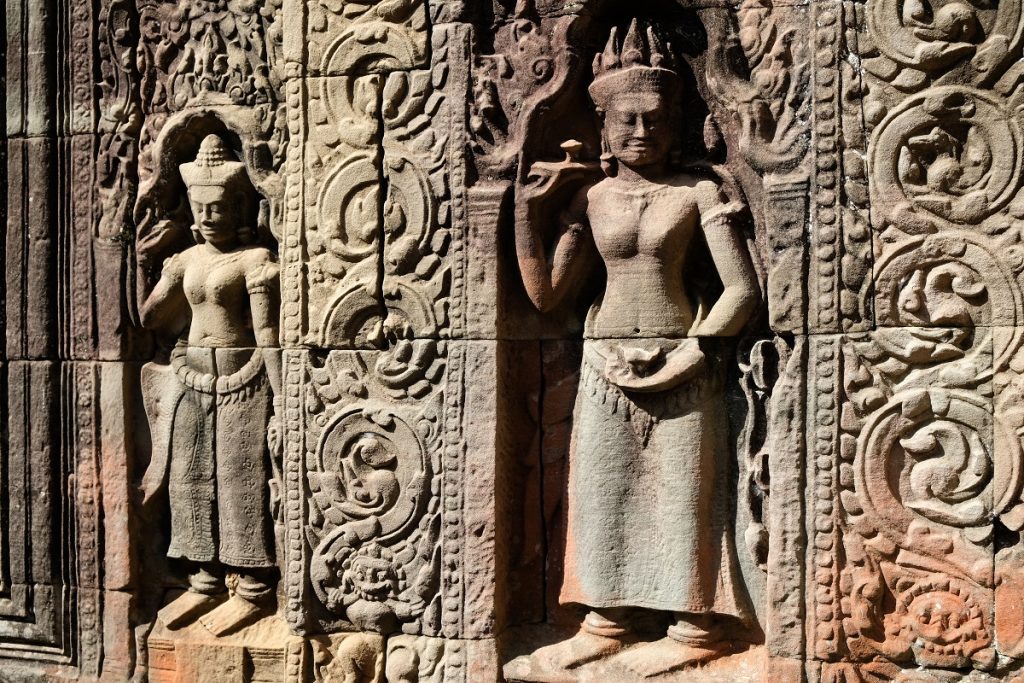If someone mentions an ancient Khmer temple entangled with giant tree roots, you would probably think of Ta Prohm, the iconic centuries-old ruins that are almost as popular as Angkor Wat itself. And if someone brings up Jayavarman VII, the powerful king who was also a prolific builder, his state temple Bayon with its emblematic enormous faces would probably dominate the conversation. However, there is one temple also constructed under the reign of the same king, bearing architectural and decorative elements similar to those found at Ta Prohm and Bayon, which is much quieter and more peaceful than the other two today.
Known as Ta Som, this relatively modest 12th-century Buddhist sanctuary occupies a plot of land directly to the east of the Jayatataka Baray, a man-made reservoir also commissioned by Jayavarman VII. As we went inside the compound and walked around the structures, I had to pinch myself for not visiting this temple on my first trip to Cambodia thirteen years ago. But back then I was short on time, and this place is located along the so-called Grand Circuit as opposed to the Small Circuit which I explored by bicycle back then.
Unlike Ta Prohm which was built to honor the king’s mother, Ta Som was purportedly constructed to commemorate the king’s father. This begs the question: wasn’t Preah Khan also commissioned by Jayavarman VII to venerate his father? Another theory suggests that Ta Som was actually dedicated to one of the king’s teachers. Will we ever find out the truth? We don’t know. The answer may or may not be hidden somewhere in a corner of this incredibly atmospheric temple.
We walked further on to the eastern end of the complex and were met with a truly remarkable sight. A ficus tree whose original top part seemed to have been chopped off appeared to be strangling the ancient passageway beneath it. This was such a dramatic showcase of humans versus nature. The ancient Khmer people cleared this area of vegetation to build this temple, but nature slowly reclaimed the structures. Its progression was somehow halted or at least controlled by modern conservationists who wish to ensure the survival of these beautiful edifices for many more generations to come. However, the new growths atop the tree signal that Mother Nature will never rest.
We returned to the center of the compound and took our time to marvel at the carvings which some scholars said were created with a higher degree of finesse compared to those found at Ta Som’s contemporaries. It was such bliss to have all these before my eyes with only a handful of other visitors around.
An inscription discovered at nearby Preah Khan mentions a monastic complex called Gaurashrigajaratna (literally “Propitious Holy Elephant Jewel”) which some believe might have referred to Ta Som itself. There were no elephants when we went. But with good weather and the lack of tourists which is usually the norm at the bigger and more famous temples in Angkor, our visit to Ta Som was indeed propitious.


Large faces (purportedly those of Avalokitesvara) are a common feature at temples built by Jayavarman VII

Each devata has her own headdress, with the patterns on the garment still discernible on some of them